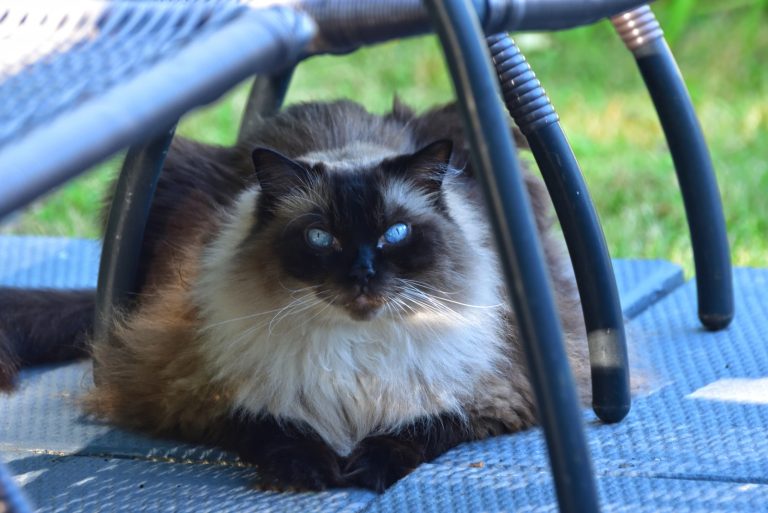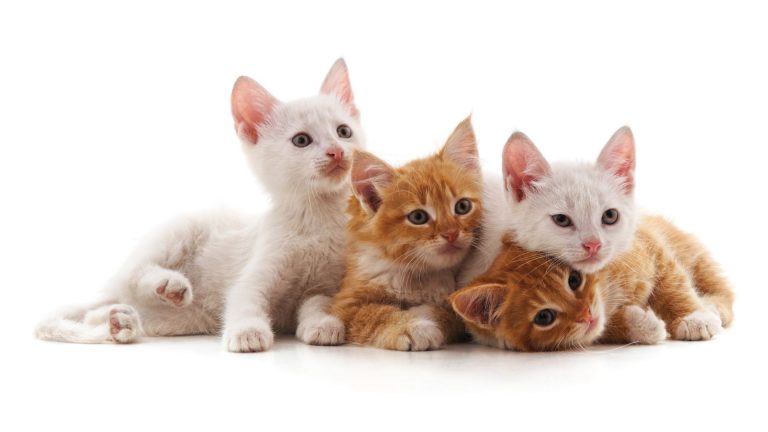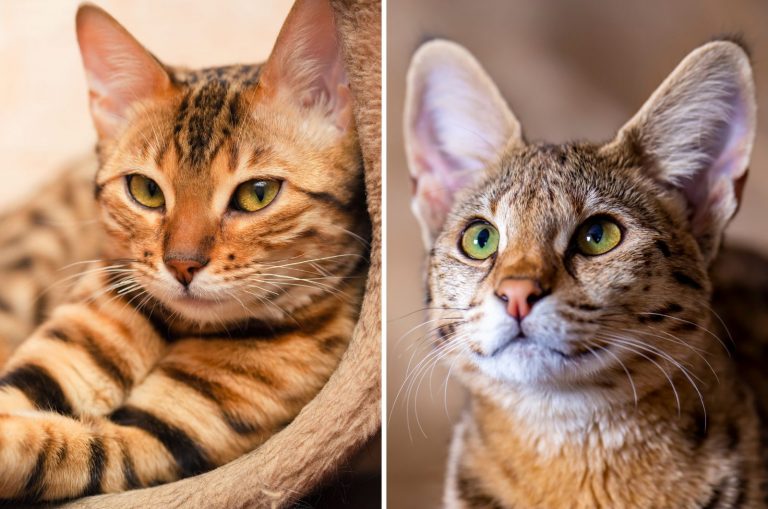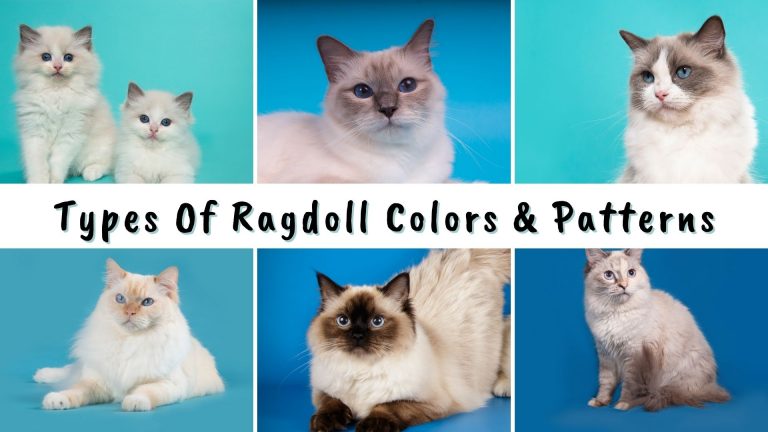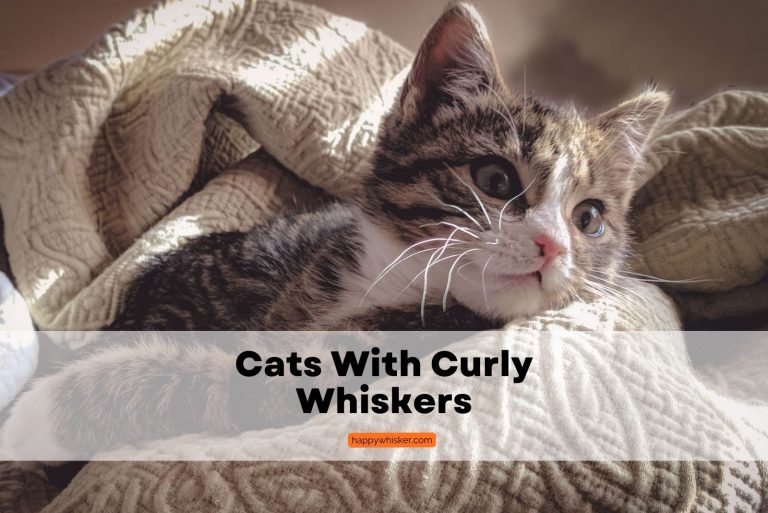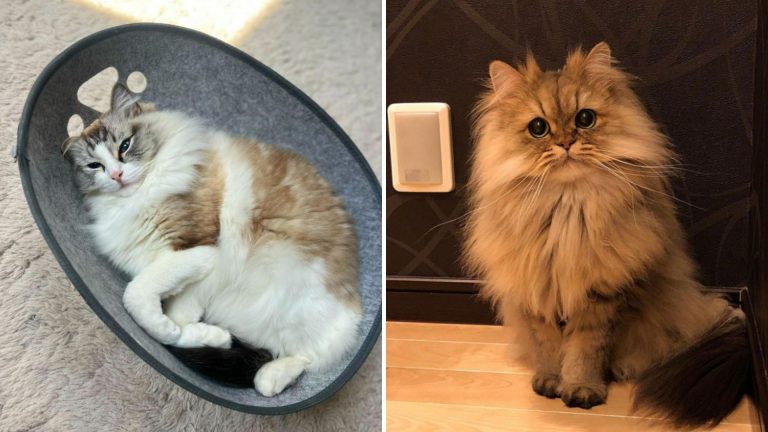What Breed Is My Cat? 6 Ways To Determine Your Cat’s Breed

If you never found out your cat’s breed, you might be wondering, What breed is my cat? Learning your cat’s breed will satisfy your curiosity and help you get to know your kitty better.
Cat breed influences a cat’s personality, lifespan, and susceptibility to health issues.
Knowing your cat’s breed can help you understand your cat’s behavior and give you “a heads-up” on which health problems your kitty might encounter.
As you’ll see, some methods of breed identification are more reliable than others, but nevertheless, let’s jump right in!
What Breed Is My Cat?

If you got your feline from a breeder, you know your cat’s breed. However, when you get a rescue or shelter cat, you’re likely to be guessing the cat’s breed.
The most common type of cat is a mixed cat (some data suggests 98% of all cats are mixed-breed cats!), and their ancestry is hard to pinpoint. Identifying the breed of a pure-breed cat is hard enough, let alone that of a mixed-breed cat.
However, identifying your cat’s breed is possible! Hopefully, this article will help you at least narrow down the “my cat might be this breed” list!
Method No.1: Breed Identification Based On Physical Traits

Physical characteristics are frequently used to identify purebred cats. The breed of a purebred cat may be determined using height, body conformation, coat length, color, markings, head shape, ears, and tail appearance.
Physical characteristics are unfortunately not usually accurate in identifying mixed-breed cats. You would anticipate mixed-breed cats to exhibit traits from both of their parents.
However, mixed-breed cats may really resemble either one of their parents or neither of their parents. Occasionally, the same litter will exhibit all of these traits!
With no further ado, let’s start narrowing down the pool of potential breeds your cat might be!
1. Size
The easiest way to classify your cat into a specific group of cats is based on your cat’s size!
Small-sized cats are those that are up to 8 pounds. There aren’t many miniature cat breeds, and little cats like these are rather easily recognizable.
Medium-sized cats are those anywhere from 9-13 pounds. If your cat is a medium-sized cat, narrowing your potential cat breed pool may not be so useful, as most domestic cats are medium-sized.
When it comes to large-sized cats, they weigh more than 13 pounds. Luckily, if your cat is a larger cat, then the potential cat breed pool is very narrow.
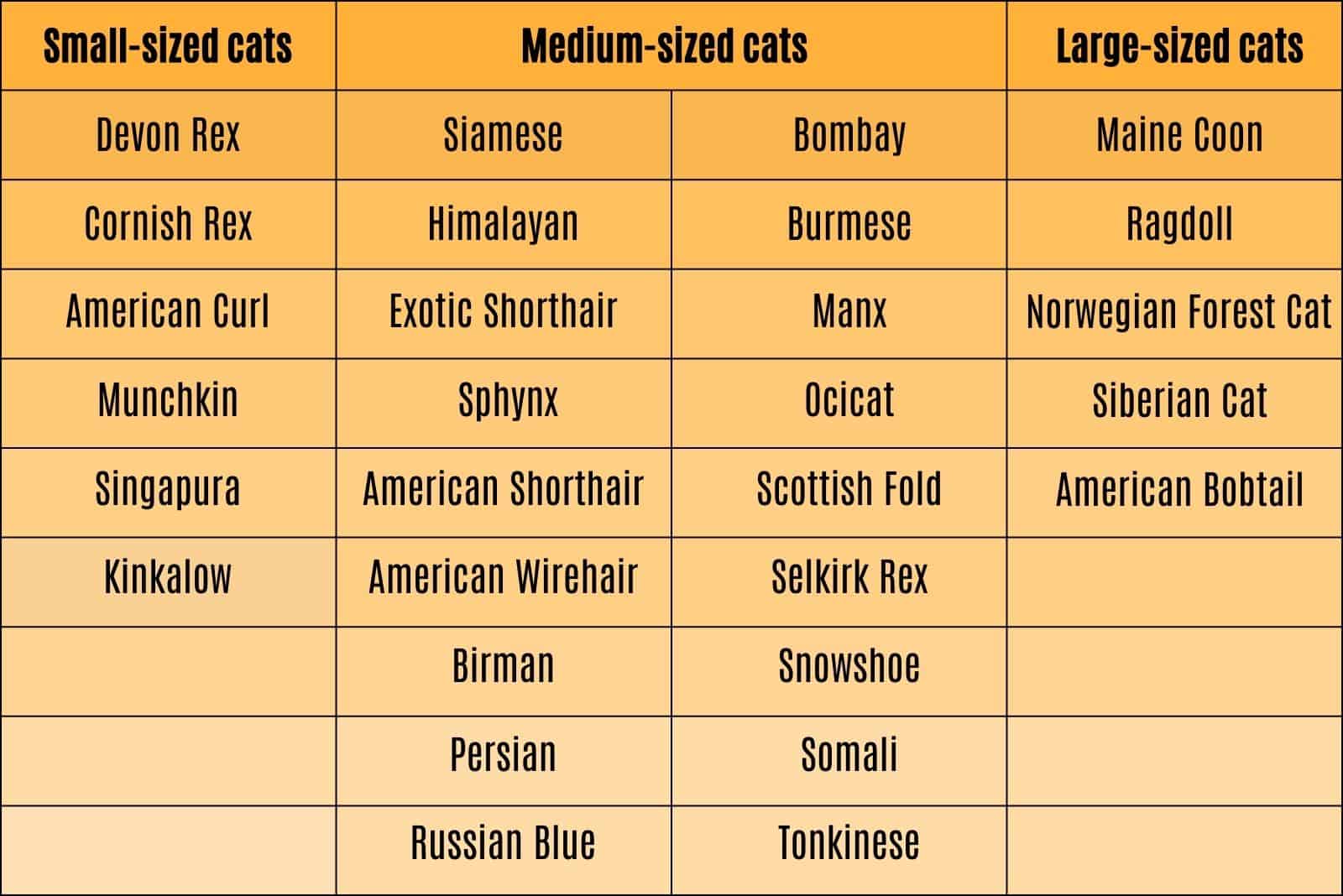
You might find this article interesting: List Of Biggest Cat Breeds On Earth (20 Domestic Cats)
2. Legs
This might sound odd, but you can rule out some cat breeds based on the size of their legs. Most cat breeds have “standard-sized legs”, so if your cat has short legs, it could be one of the few short-legged cat breeds.
Short-Legged Cats
The term “dwarf breed” refers to cat breeds with tiny legs, which have recently gained popularity. They may also be referred to as midget, dwarf, or sausage cats.
• Kinkalow
• Minskin
• Bambino
• Munchkin
• American Curl
If your cat is not short-legged, then you’ve just ruled out five potential cat breeds your feline might be!
3. Face Shape
To narrow down the pool of potential cat breeds your cat might belong to, let’s briefly focus on the cat’s face shape. One of the more unique traits a cat might have is a flat face, or a very narrow face.
Flat-Faced Cat Breeds
These cats are famous for their deformed skulls, which cause a short jaw and a short nose, and are called brachycephalic cats. Some flat-faced cats are entirely brachycephalic, while others are just partly so, depending on the breeding program.
Unfortunately, these kitties are more prone to specific health issues, notably breathing and dental issues. However, that’s a topic for another time!
If your kitty is flat-faced, it might be one of these brachycephalic breeds:
• Exotic Shorthair
• Persian
• Burmese
• Scottish Fold
• Bombay
• British Shorthair
• Munchkin
• Selkirk Rex
4. Ears
Even though most cats have straight ears, a small number of cat breeds are popular for their adorable unusual ears.
Cat Breeds With Curled Ears
These cats have a genetic abnormality that interferes with cartilage growth. The ear cartilage fold gives the cat its distinctive look by causing the ears to curve forward. Cat breeds that have this unique appearance are:
• American Curl
• Ukrainian Levkoy
• Elf cat
• Highlander
Cat Breeds With Folded Ears
Folded ears are also a result of genetic abnormality, which causes a cat’s ears to fold forward until they’re flat on the cat’s head. Apart from ear shape, this abnormality affects bone and cartilage development.
There is a small number of cat breeds with folded ears, and the most notable example is the Scottish fold!
5. Coat Length
You can use your cat’s coat length to find the cat breed your cat might be. Below, you can see the most common long-haired and short-haired purebred cats for each coat length: long, short, curly, and no-coat!
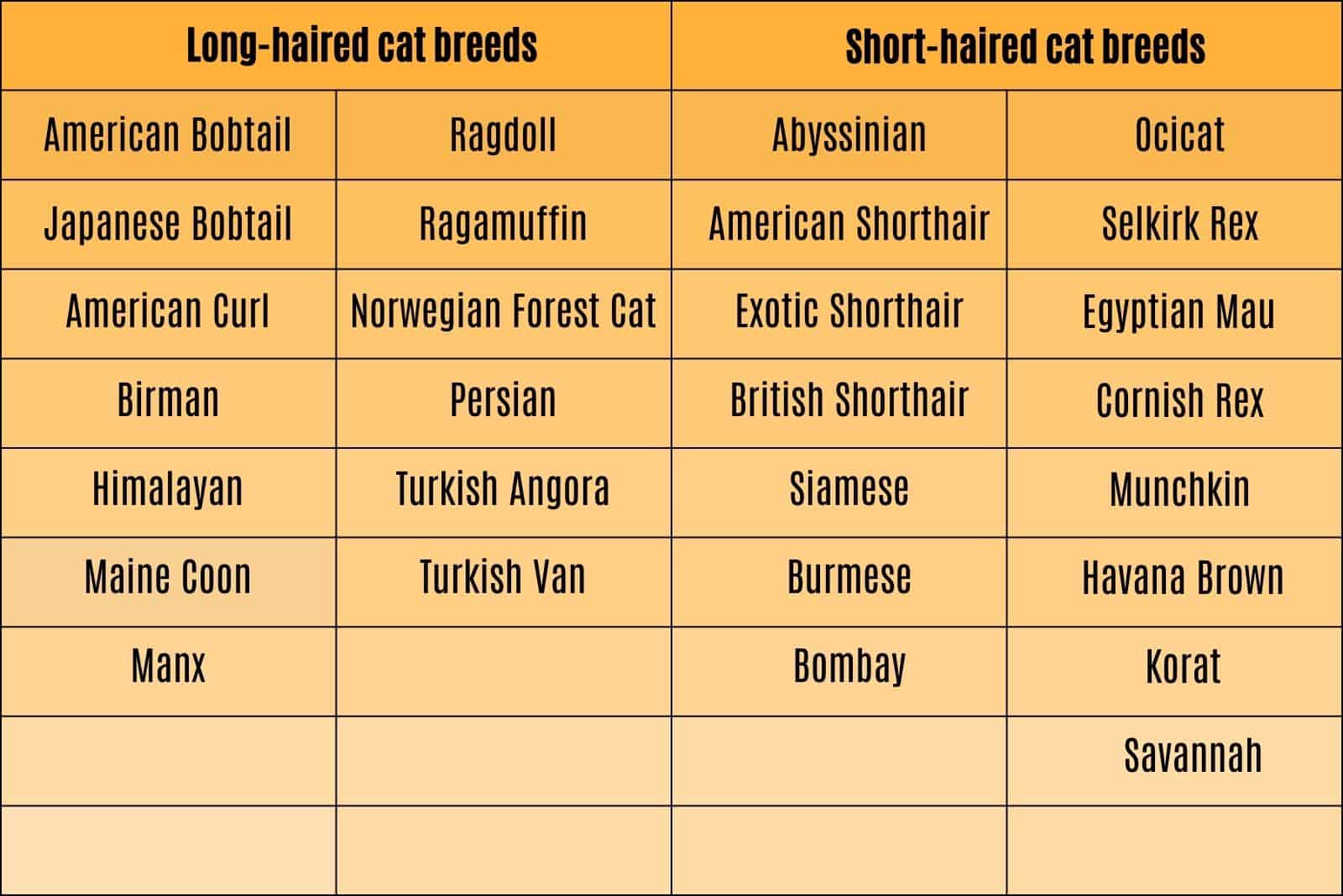
Notable mentions are cats with curly coats and cats with no hair!
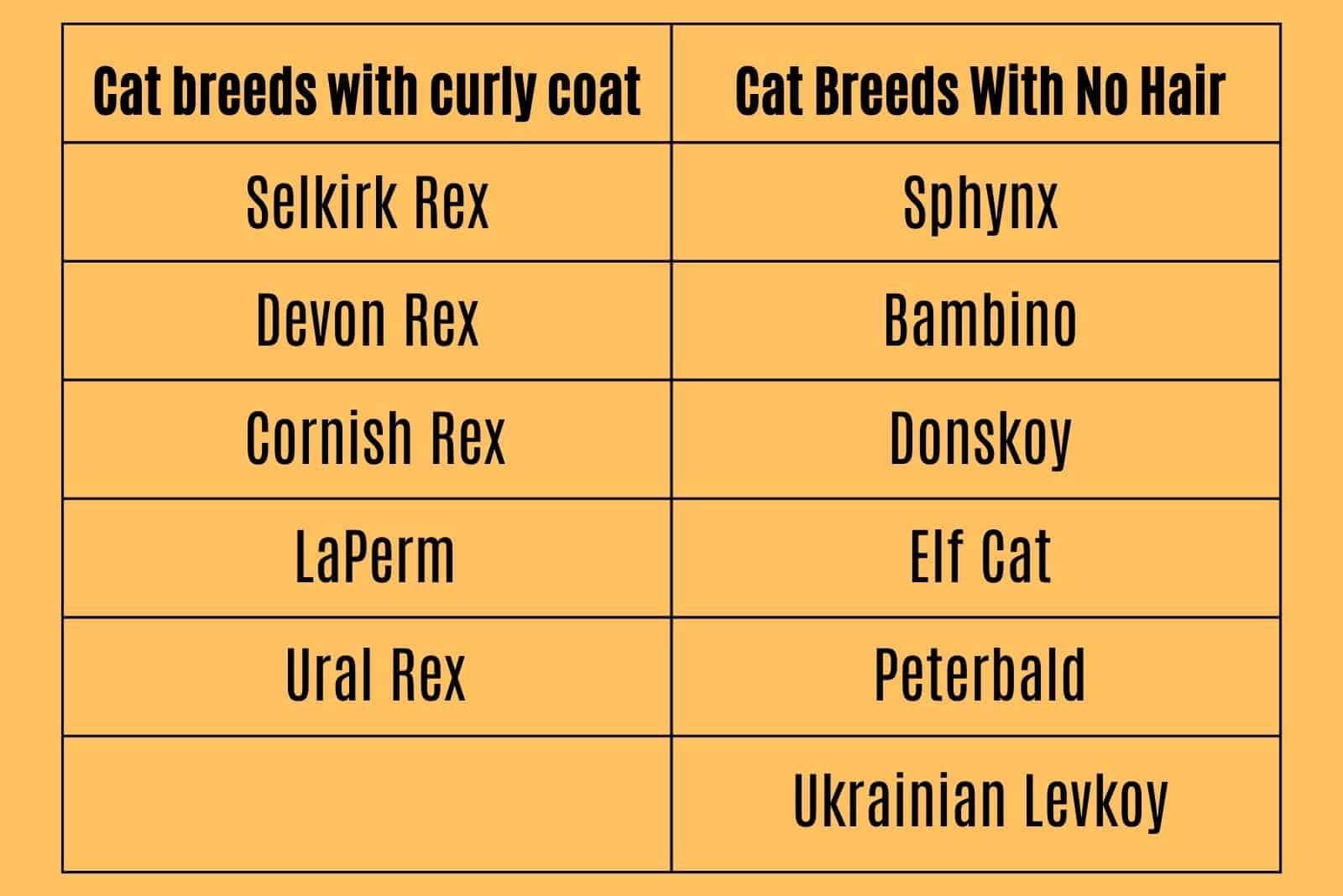
6. Coat Pattern
Cats come in many different colors, and coat color is not the most reliable representation of a cat breed. The same goes for coat patterns, such as bi-color, tortoiseshell, solid, lynx, and other patterns – many cats can have them!
However, some patterns are more prevalent in particular cat breeds than others. In this section, I will focus only on three patterns: colorpoint, spotted, and calico.
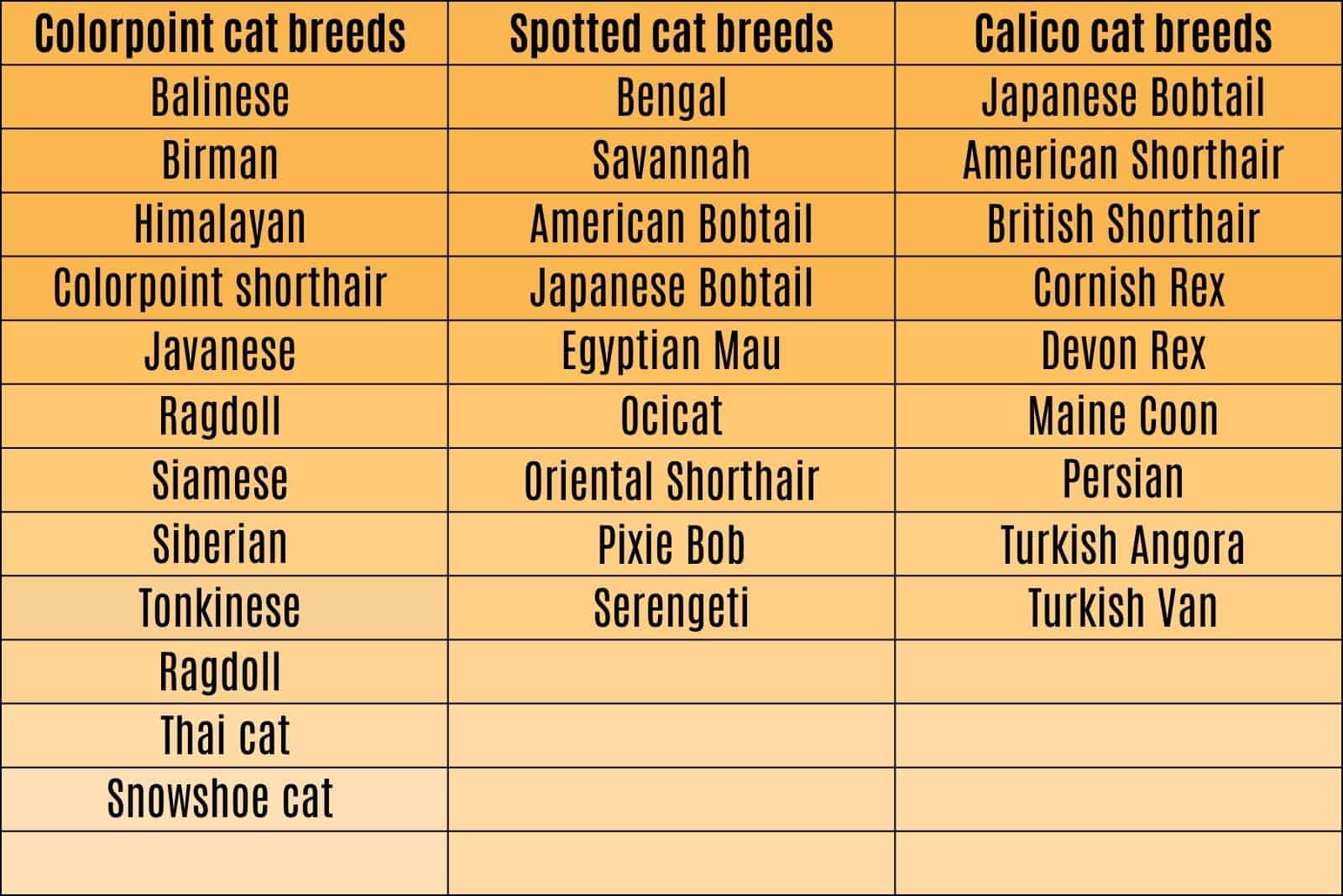
Related: Different Types Of Calico Cats + Pictures & Facts
7. Tail
Most cats have normal-length tails, but a small number of different cat breeds possess a bobbed tail. If your kitty has a short tail (or no tail), this is the perfect section for you!
Bobtailed Cat Breeds
Cat breeds with bobtails are famous for having unusually short tails or none at all. Due to a genetic abnormality, these cat breeds lack the typical domesticated cat’s long tail. Instead, they either possess just a portion of the tail length or no tail at all. If they have tails at all, they might be straight, kinked, or curved.
Those cat breeds are:
• Japanese Bobtail
• American Bobtail
• Pixiebob
• Manx
• Cymric
• Highlander
Learn more: Cat Breed With No Tail – The Manx Cat + Other Tailless Cats
Method No.2: Breed Identification Based On Personality
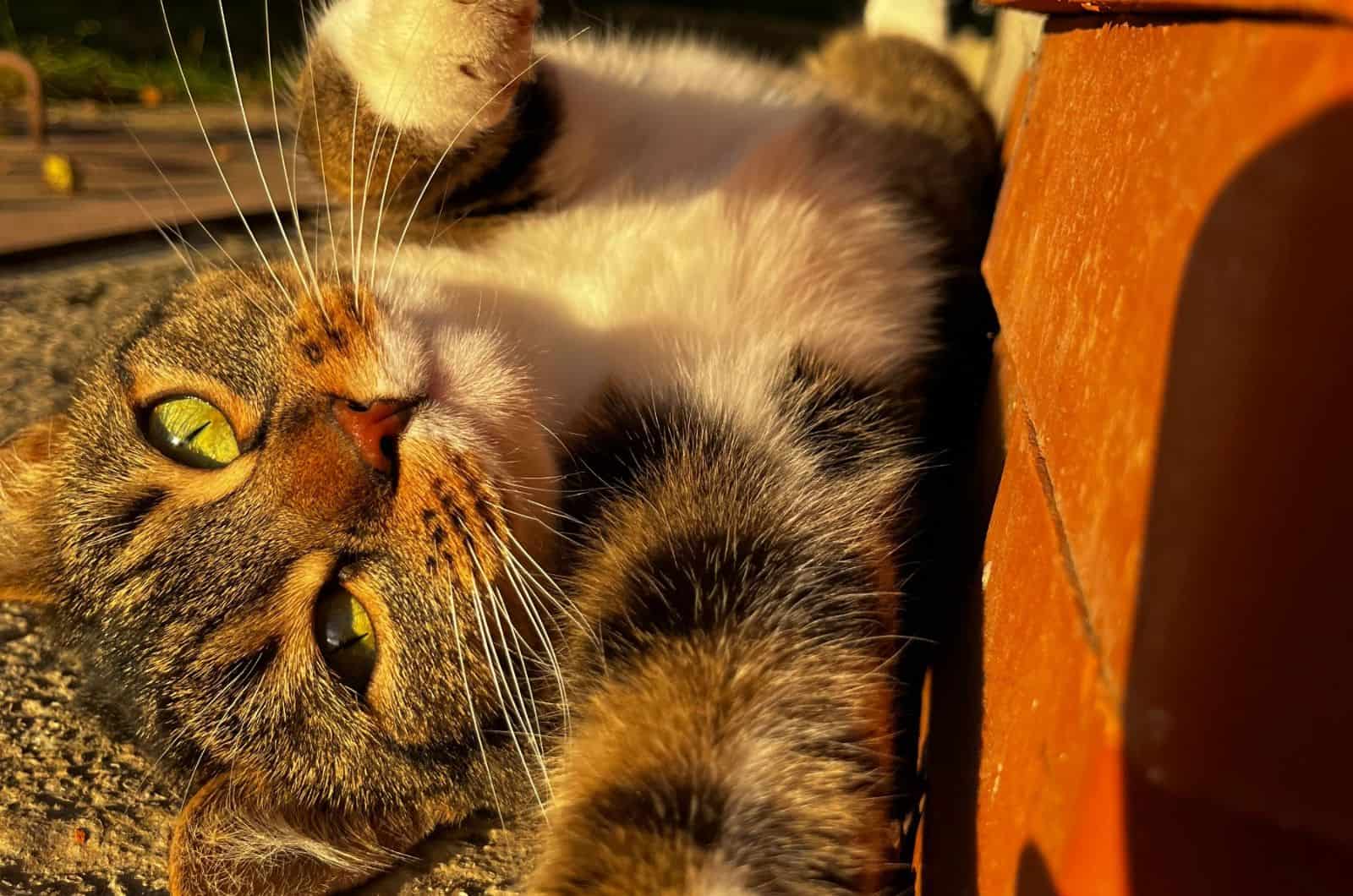
Just like physical traits, a cat’s behavior can occasionally provide information about its breed. Breed-specific habits in cats may increase the likelihood that the cat is of that breed.
Your cat’s behavior might reveal more information about your cat’s breed.
However, it’s crucial to remember that behavior does not always accurately indicate breed. While behavioral cues may provide helpful information, they should not be considered a source of firm conclusions.
It would be best to combine your cat’s physical traits, together with its personality traits and then make an assumption about your cat’s breed.
With no further ado, let’s jump into which cat breeds express which personality traits!
Intelligent Cat Breeds
As you might already know, some cats are more intelligent than others.
Cat intelligence is determined by their capacity for learning, how they interact with other animals, and how well they can adjust to new settings. Intelligent cat breeds include:
• Abyssinian
• Siamese
• Cornish Rex
• Japanese Bobtail
• Bengal
• Devon Rex
• Manx
• Ocicat
• Persian
• Ragdoll
• Turkish Van
Loud Cat Breeds
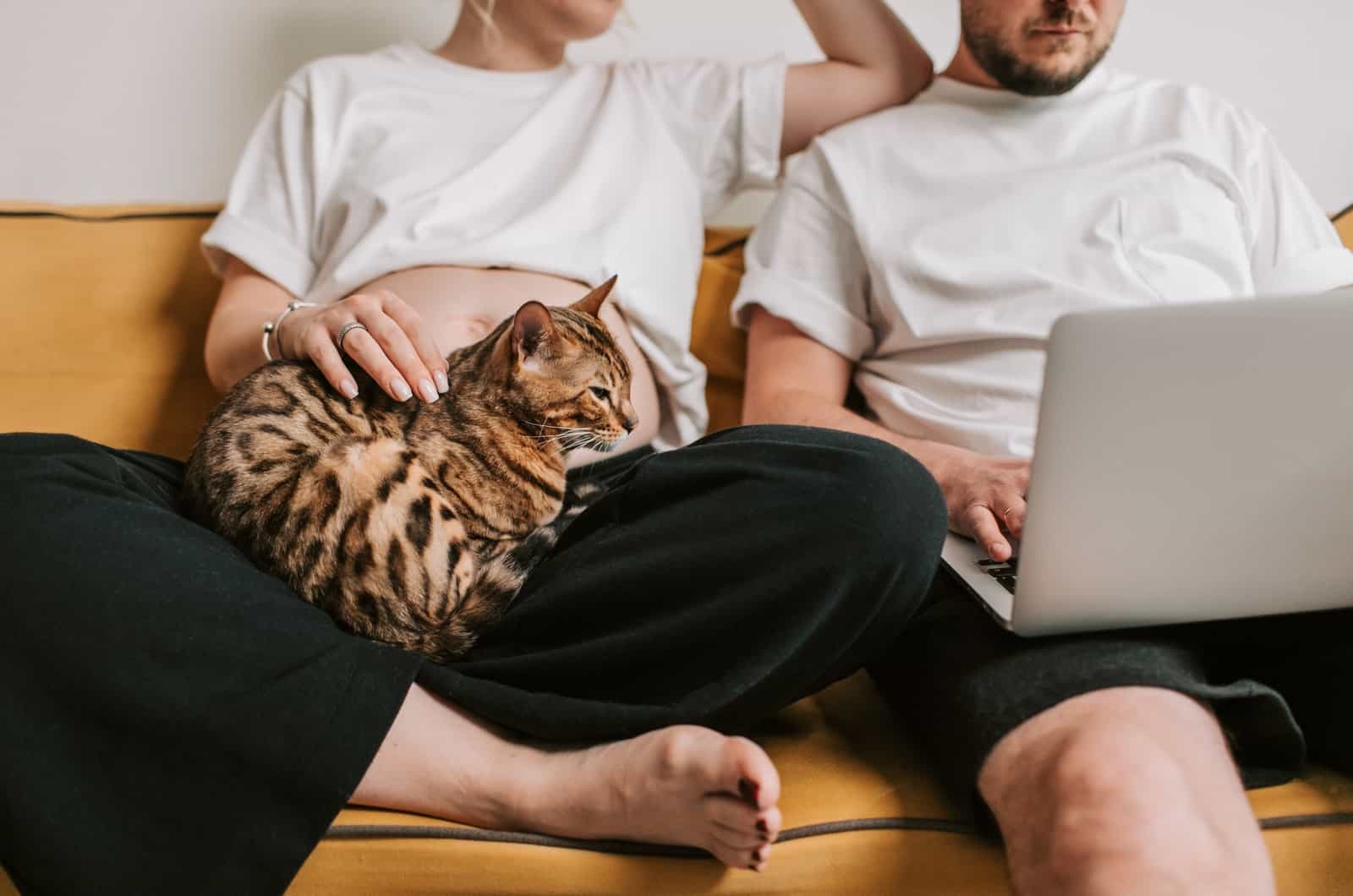
Cats use their well-known purrs and meows to communicate with their owners about their moods, needs, and sometimes demands. However, some cat breeds are much louder than others.
If you have a chatty kitty, it just might be one of the following cat breeds:
• Sphynx
• Bengal
• Burmese
• Siamese
• Tonkinese
• Oriental
• American Bobtail
• Balinese
• Colorpoint Shorthair
• Ocicat
Affectionate Cat Breeds
Although cats are very independent, they can also be affectionate and become attached to their owners.
These cat breeds are more friendly and outgoing, and they are frequently calm and docile rather than tense and worried. These felines may also vocalize their adoration by meowing, purring, muttering, and trilling, so if your cat fits the description, it might be one of these cat breeds:
• Ragdoll
• American Shorthair
• Scottish Fold
• Persian
• Maine Coon
• Siamese
• Sphynx
• Burmese
• Cornish Rex
Energetic Cat Breeds
Some cats love to lounge in their cat bed all day, while others don’t see their cat bed before bedtime! Very energetic, can run around all day, are very curious, and enjoy exploring everything (including high shelves).
Naturally, senior cats are less energetic than younger cats. However, there are variations based on breed. The following cat breeds have a reputation for being very active:
• Abyssinian
• Bengal
• Balinese
• Burmese
• Savannah
• Siamese cat
• Japanese Bobtail
• Devon Rex
Calm Cat Breeds
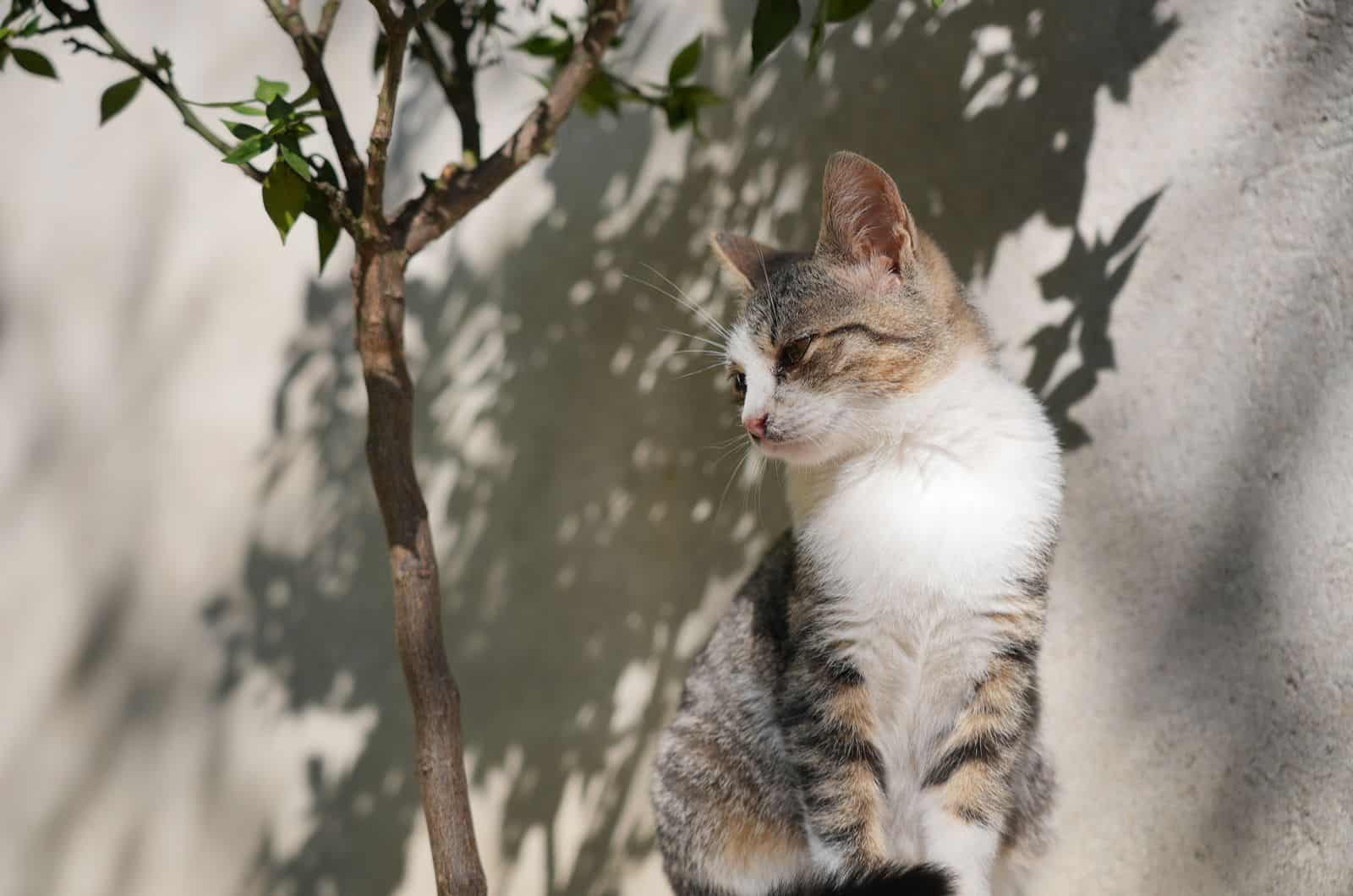
On the other hand, some cats prefer sleeping and cuddling (who can blame them?!). You’re less likely to find these kitties jumping from one side of the room to another, so they’re perfect for senior cat lovers!
Calm cat breeds would be:
• Birman
• American Shorthair
• British Shorthair
• Manx
• Ragdoll
• Russian Blue
• Selkirk Rex
• Himalayan
• Ragdoll
Method No.3: Use Cat Breed Charts
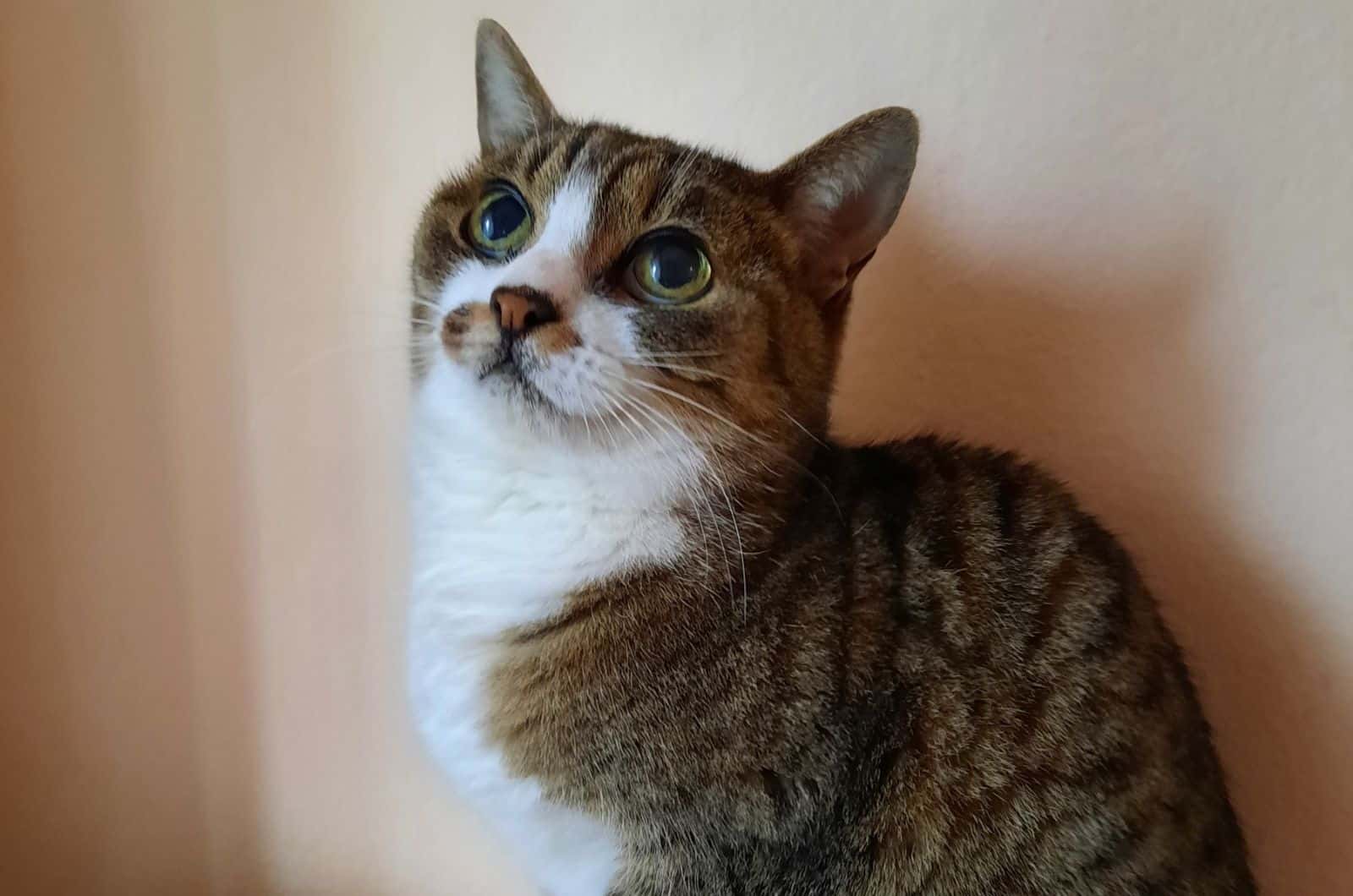
If you want a quick and easy answer, looking at cat breed charts is a great option for you. Luckily, there are many cat breed charts online, but make sure to check out my go-to cat breed characteristic chart!
If you haven’t found a match for your kitty there, I suggest you also check out:
Here you’ll find pictures and a bunch of other information about each specific cat breed, such as breed history, personality, temperament, shedding, health issues, etc. On the left-hand side of the website, you can even filter out some cats that don’t match your cat’s description.
• The Cat Fanciers’ Association Breed List
I love CFA’s breed list, as you can easily see what every cat breed looks like and its main characteristics and facts. If you’re interested, you can then look into more details about every cat breed.
• The International Cat Association’s Championship Breeds List
On this website, you’ll see a list of all cat breeds recognized by TICA. If you click on the breed’s name, you’ll be able to learn much more about the cat breed. The information there is extensive, but it can help you pinpoint your cat’s breed!
• Vets Choice Insurance For Pets list of most common cat breeds in Australia
I like their website and how you can easily see the physical characteristics of the cat breed based on the photo and learn more about the breed by clicking on the photo or the breed name.
When searching for your cat’s breed, you can breeze through the photos, and if your kitty is anything like any of the cats on the list, you can further look if the personality traits match too!
Check out this website that allows you to filter out cat breeds based on the cat’s size, coat length, coat color, and other characteristics. Every cat breed has an accompanying photo, so you can browse the cat breeds and find the one that looks similar to your cat!
Method No.4: Cat Breed Identification Apps
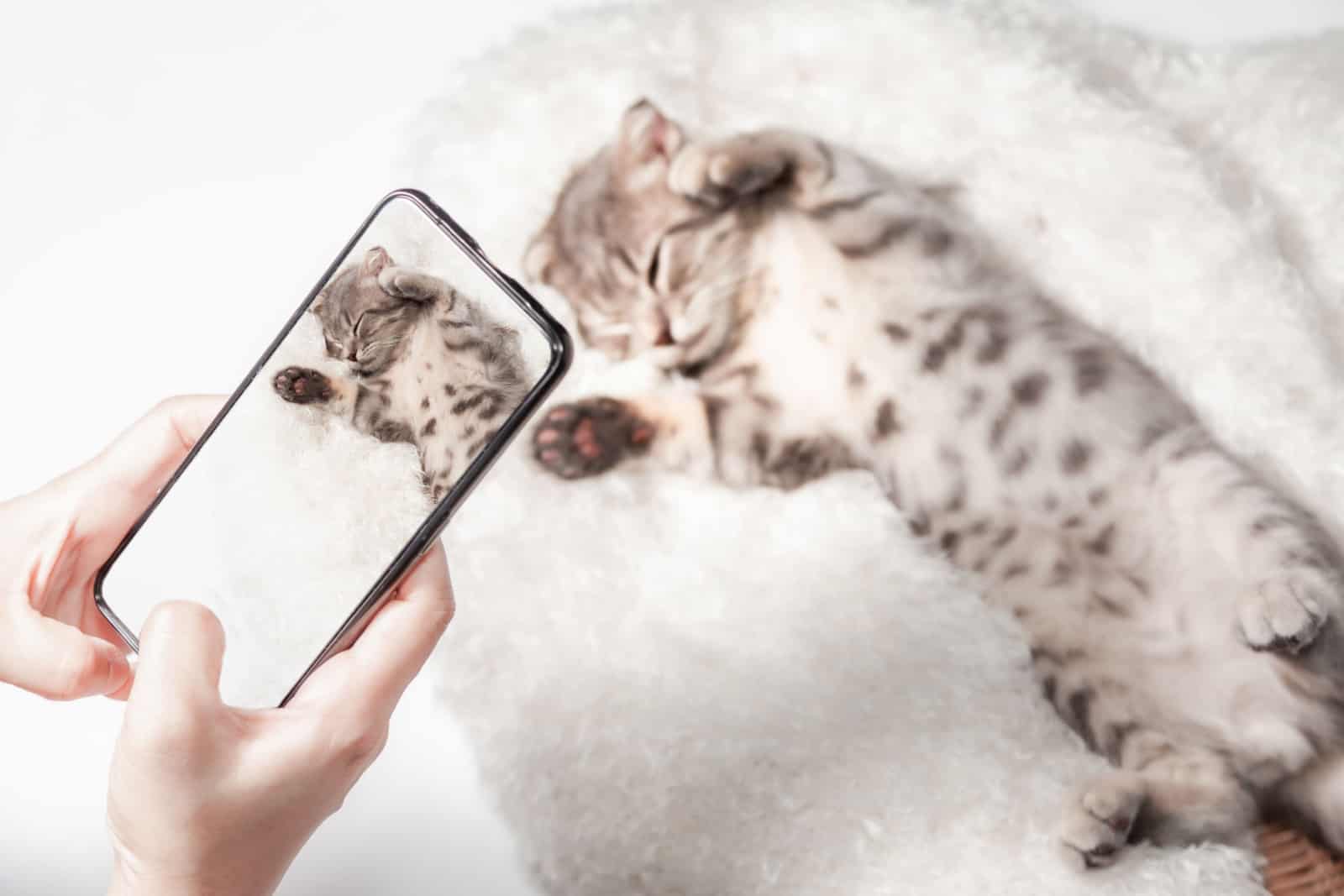
Did you know you can identify your cat’s breed using an app? Yes, you heard it right!
Apps that identify pet breeds let you upload a picture or video. The next step involves comparing your photo or video to other photographs and films in the database using artificial intelligence. The software then predicts the breed of your cat.
Apps for purebred cats are often accurate, according to user feedback. They are less accurate at detecting mixed-breed cats, though. Therefore, these apps may be able to identify a cat’s breed, but they might not be precise enough to trace the origins of your mixed-breed cat.
Keep in mind that every breed identification program has its limits, and the accuracy of the results cannot be guaranteed.
Cat Scanner is one of the applications with the best ratings. It enables you to have some fun and can aid you in determining the breed of your cat using your IOS or Android smartphone.
Cat Scanner
Snap a brief photo or video of a cat, and your Cat Scanner app will quickly and accurately identify the breed. Use your camera or select a picture from the gallery to upload. AI-based picture recognition will promptly provide your findings.
Make careful to submit a clear photo/video because the outcome will only be as good as the image or video you supply to the app.
The Cat Scanner app may now recognize approximately 60 distinct cat breeds, and his app also recognizes mixed breeds! It gives you thorough information and fascinating facts about the various breeds of your mixed-breed cat.
If you’re interested in how this app is used, check out this user’s experience with Cat Scanner!
Method No.5: Breed Identification Via Genetic Testing
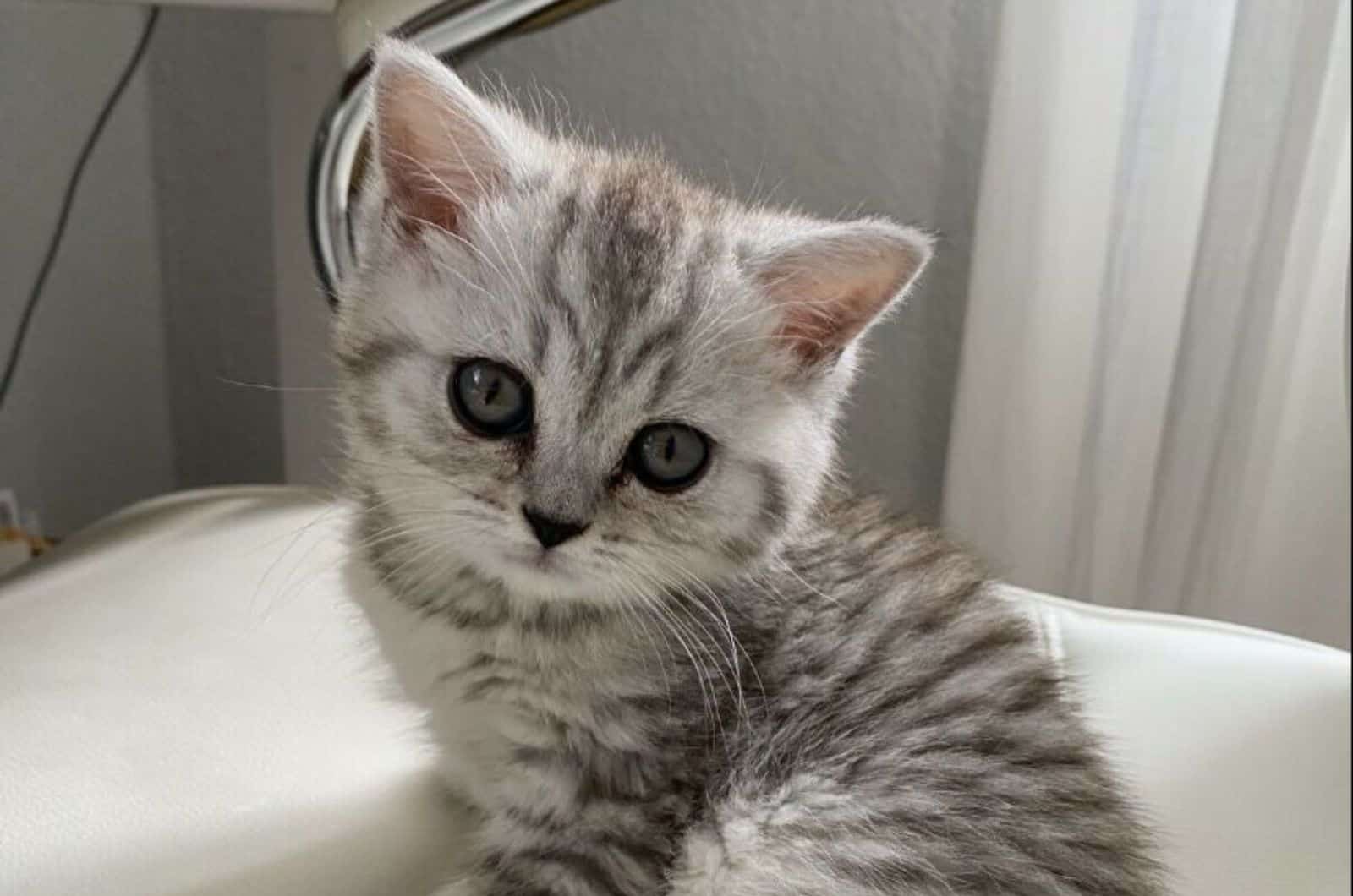
I’m sure all of you have heard of 23andMe, a biotechnology company that offers DNA testing to people who want to learn more about their ancestry and health insights.
Well, the same is possible for our felines too! Genetic testing for cats and dogs is becoming more and more widespread, as many owners want to learn more about their pets.
Genetic testing is the most accurate technique to learn your cat’s genetic makeup. These tests seek the presence of particular DNA sequences linked to particular breeds while analyzing the DNA of your cat.
Almost all domestic cats share the same genetic makeup. There are, however, very slight genetic variations that have been discovered and linked to particular breeds. Genetic testing is based on identifying these breed-specific variations.
DNA testing may also be used to determine whether your cat has any gene markers for particular medical issues.
There is no need to be alarmed if your cat’s DNA test reveals that they carry a gene marker for a health disease, as it does not necessarily guarantee that the condition will manifest in your cat.
Now, let’s go over two popular companies you can further look into if you’re interested in ordering a DNA test for your feline.
1. Basepaws
Basepaws is a company specializing in pet DNA tests, which only use a small amount of cat DNA obtained at home.
The test results will shed light on cat breeds your cat shares traits with, the genes and mutations that gave your cat its particular physical features, and health issues your cat might be genetically susceptible to.
Do you want to know what Basepaw breed identification procedure looks like? This video explains it all!
Your results should arrive in 4-6 weeks!
2. Wisdom Panel
Wisdom Panel is another company specializing in pet DNA testing. Testing your cat using their kit is very simple.
You buy the kit, swab your cat’s cheek using two combs for around 15 seconds, and send the dry samples back to Wisdom Panel using the box you’ve received.
The test results will give you a comprehensive breed report and in-depth health insights that will help you provide your feline with the best care possible.
These results can give pet cat owners and veterinarians more chances to address problems earlier and work together to develop personalized treatment regimens for a pet’s particular needs.
Method No.6: Ask Your Veterinarian
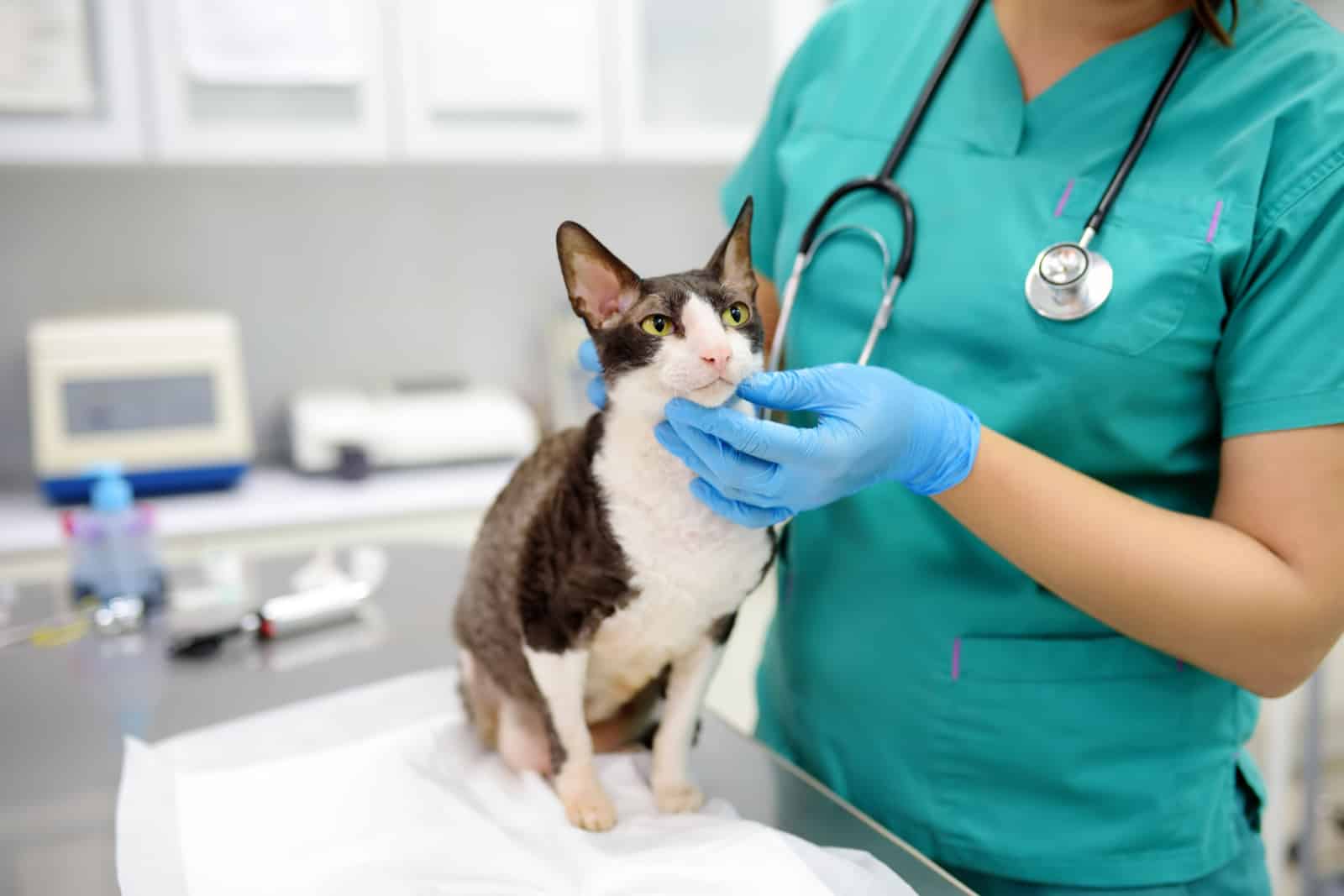
I know this might seem silly, but asking your kitty’s veterinarian can be all you need to do to find out your cat’s breed.
Your vet has seen thousands of cats so far and is way more skilled in determining the cat’s breed than you are.
Even though learning how to identify a cat’s breed was most probably not a part of their university education, I’m sure your vet can at least help you narrow down the “suspected cat breeds” “list!
So, the next time you take your feline to a vet appointment, ask your vet which breed he/she thinks your cat is!
Wrapping Up
And there you have it! We have gone over all the methods of determining your cat’s breed.
Along with apps and internet tools, straightforward criteria like physical attributes and behavioral traits can frequently help you identify the cat breed. However, genetic testing is your best choice if you want a more precise response.
Knowing your cat’s breed has its benefits, one being that it will satisfy your curiosity, and you’ll no longer wonder what breed is my cat? The second (and more important) one is that knowing your cat’s breed can warn you about potential health issues cats of that breed might experience.
However, not knowing your cat’s breed is not the worst thing! The only thing that matters is that your feline is healthy and looked after!
Related Articles:
13 Breeds Of Cat With Big Heads + Explanation
Do Hypoallergenic Black Cats Exist? Assessing 22 Cat Breeds
Top 18 Long Haired Cat Breeds: Grey Stunners (With Pictures)

